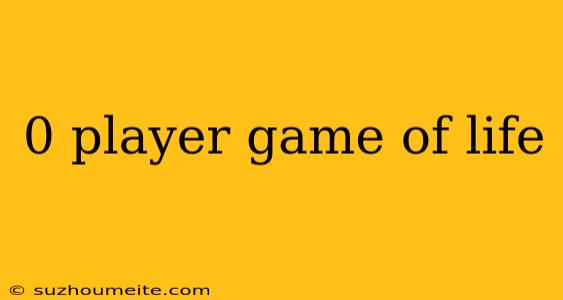The 0-Player Game of Life: A Fascinating Simulation of Life and Death
What is the Game of Life?
The Game of Life is a renowned cellular automaton devised by British mathematician John Conway in the 1970s. It's a zero-player game, meaning that it evolves on its own without any external input. The game is played on a grid, where each cell can be in one of two states: alive (represented by a 1) or dead (represented by a 0).
The Rules of the Game
The Game of Life operates under a set of simple rules, which govern the fate of each cell in the grid:
- Any live cell with fewer than two live neighbours dies, as if by underpopulation.
- Any live cell with two or three live neighbours lives on to the next generation.
- Any live cell with more than three live neighbours dies, as if by overpopulation.
- Any dead cell with exactly three live neighbours becomes a live cell, as if by reproduction.
How Does the Game Evolve?
The game starts with an initial pattern of live and dead cells. As the game progresses, cells are born, live, and die according to the rules above. The game can produce fascinating patterns, from oscillators ( patterns that repeat indefinitely) to spaceships (patterns that move across the grid).
Patterns and Behaviors
The Game of Life has given rise to numerous interesting patterns and behaviors, including:
Still Lifes
Patterns that remain unchanged over time.
Oscillators
Patterns that repeat in a cycle.
Spaceships
Patterns that move across the grid.
Gliders
A specific type of spaceship that can collide with other patterns, creating complex interactions.
Conclusion
The 0-player Game of Life is a thought-provoking simulation that has captivated the minds of mathematicians, scientists, and enthusiasts alike. Its simple rules give rise to complex, emergent behaviors, making it a fascinating area of study in the realm of artificial life.
